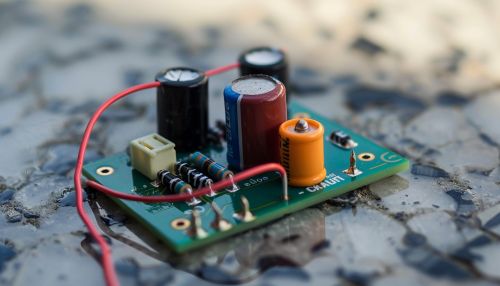Kirchhoff's circuit laws
Introduction
Kirchhoff's laws are two equalities that deal with the current and potential difference (commonly known as voltage) in the lumped element model of electrical circuits. They were first described in 1845 by German physicist Gustav Robert Kirchhoff. These laws are central to the analysis of any electrical circuits and have wide applicability in electrical engineering.


Kirchhoff's Current Law (KCL)
Kirchhoff's Current Law, also known as Kirchhoff's first law, the junction rule, and the point rule, states that for any node (junction) in an electrical circuit, the sum of currents flowing into that node is equal to the sum of currents flowing out of that node. This is based on the principle of charge conservation, which states that the rate at which charge is flowing into a point in a circuit must equal the rate at which charge is flowing out.
Formally, if we consider a junction, j, in a circuit, and let I_{in} represent the total current flowing into the junction and I_{out} represent the total current flowing out of the junction, then Kirchhoff's Current Law can be written as:
I_{in} = I_{out}
This law is applicable to both direct current (DC) and alternating current (AC) circuits.
Kirchhoff's Voltage Law (KVL)
Kirchhoff's Voltage Law, also known as Kirchhoff's second law, the loop rule, and the mesh rule, states that the directed sum of the potential differences (voltages) around any closed loop or mesh in a network is zero. This law is based on the principle of energy conservation, which states that energy can neither be created nor destroyed, only transferred from one form to another.
Formally, if we consider a loop, l, in a circuit, and let V_{in} represent the total voltage supplied to the loop and V_{out} represent the total voltage dropped across the elements in the loop, then Kirchhoff's Voltage Law can be written as:
V_{in} = V_{out}
This law is applicable to both direct current (DC) and alternating current (AC) circuits.
Applications of Kirchhoff's Laws
Kirchhoff's laws are fundamental to the study of electrical circuits and are widely used in electrical engineering. They form the basis for many techniques used to analyze circuits, such as nodal analysis, mesh analysis, and Thevenin's theorem. They are also essential for understanding the behavior of electrical networks.
Limitations of Kirchhoff's Laws
While Kirchhoff's laws are widely applicable, they do have some limitations. They are based on the lumped element model, which assumes that the size, shape, and connection configuration of components in the circuit are insignificant. This assumption is not valid for high-frequency circuits, where the wavelength of the signal is comparable to or smaller than the dimensions of the components or the distances between them. In such cases, more sophisticated techniques, such as transmission line theory, must be used.
